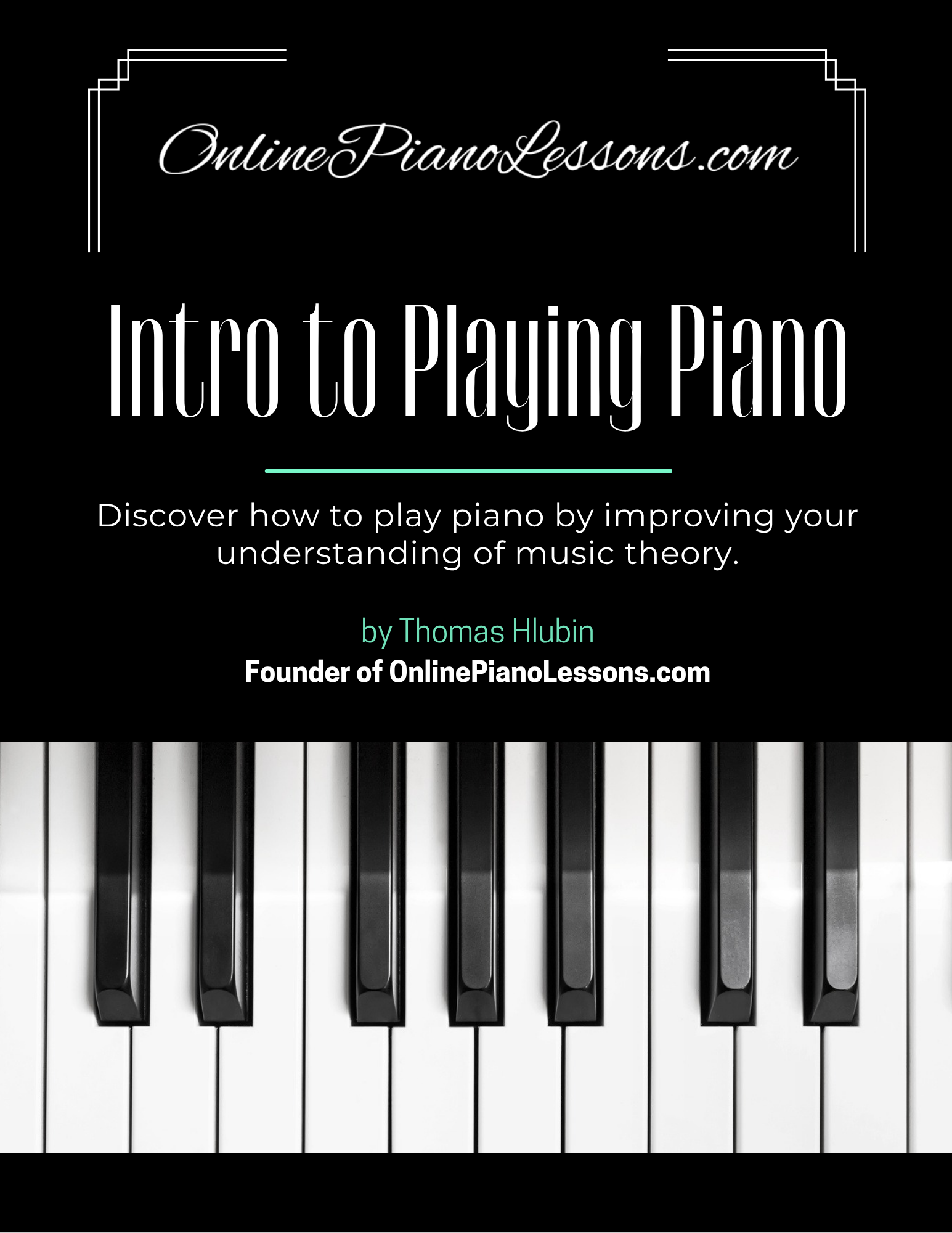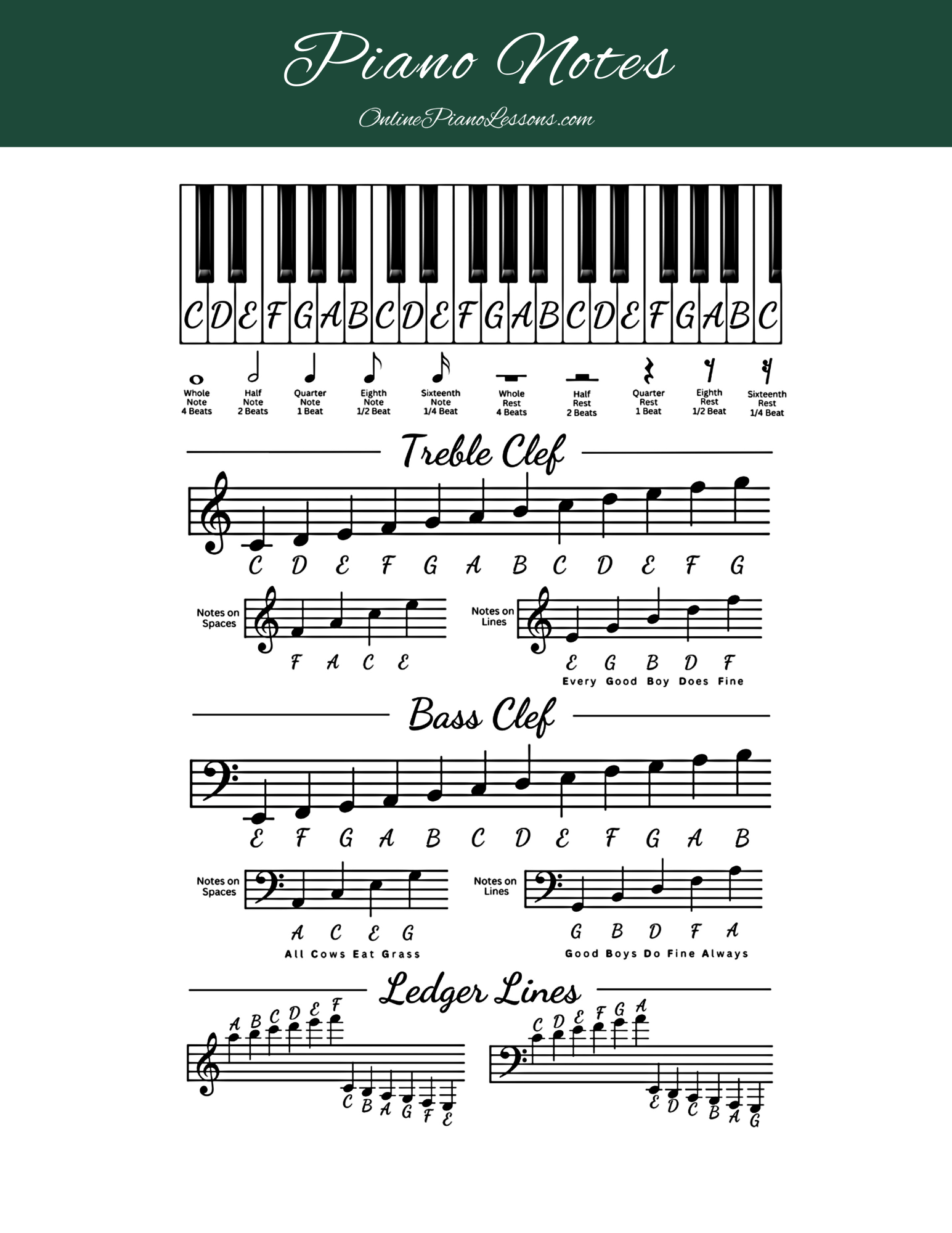If you’re brand new to the piano, understanding the difference between chords and scales is one of the fastest ways to get comfortable at the keyboard. Some common questions beginners have: Which should I learn first? How do they relate? Why do some songs look like a list of chords while others are full of scale runs? This beginner-friendly guide breaks it down simply, shows practical exercises, and gives clear practice tips so you can start using chords and scales musically right away.
What is a Scale? (and Why it Matters on Piano)
A scale is a sequence of notes played one after another — it’s a ladder of pitches that moves stepwise through a musical key. On the piano, the most basic scales beginners learn are the major and minor scales. For example, the C major scale is:
C – D – E – F – G – A – B – C
That pattern (whole step, whole step, half step, etc.) gives the scale its character. Practicing scales trains your fingers, builds evenness, improves reading, and teaches the relationships between notes. In short, scales are the roadmap that helps you understand melody and harmony on the piano.
What is a Chord?
A chord is a group of notes played at the same time. The simplest chords are triads—three notes stacked in thirds. For example, a C major chord contains:
C – E – G
On the piano, chords provide harmony and accompaniment. When you play a song, the singer or melody often uses notes from a scale, while the left hand supplies chords to support the tune. Learning common chords (major, minor, dominant seventh) lets you accompany yourself and play countless songs from simple lead sheets.
Chords vs Scales — The Quick Difference
- Scales = notes in sequence (melody practice, finger technique).
- Chords = notes together (harmony, accompaniment).
- On piano, scales train your right hand for melodies and help your ear; chords train your left hand to fill out the sound.
- In real music, scales and chords are partners: scales supply the raw pitch material, and chords provide the harmonic context.
This is the heart of the chords vs scales idea: one is linear, one is vertical — but both are essential.
How Chords are Built from Scales
Understanding how chords come from scales is a huge “aha” moment for beginners. Take the C major scale (C D E F G A B). To build the C major chord, pick every other note (C, E, G). That’s called stacking thirds.
Apply the same method in any key and you’ll get triads that belong to that scale. So, knowing your scales makes it easy to construct chords on the piano and to understand why certain progressions sound “right” together.
That’s why the chords vs scales relationship is best seen as a circle: scales create chords, and chords reveal which scales will sound good when soloing or improvising.
Major vs Minor: How Mood Changes
- Major scales tend to sound bright. Major chords (built from the major scale) sound happy or uplifting.
- Minor scales sound darker or more introspective. Minor chords (built from the minor scale) give a sadder color.
On the piano, practicing both major and minor scales helps you play matching major and minor chords with confidence — essential for writing and performing songs.
Practical Beginner Exercises (Do these Daily)
-
Five-minute scale drill
-
Pick one scale (C major is easiest). Play two octaves, hands separate, slow and even. Repeat daily. This teaches muscle memory for the scale.
-
-
Three-minute chord block
-
Play the I–IV–V progression in C (C – F – G). Play block chords in the left hand and hold them while the right hand plays the scale notes. This ties chords and scales together musically.
-
-
Arpeggio practice
-
Turn a chord into a broken chord (arpeggio): play C–E–G–C. Arpeggios connect scales and chords because they play chord tones in sequence.
-
-
Chord-scale matching
-
Over a C major chord, play the C major scale. Over an A minor chord, play the A natural minor scale. This trains your ear to hear which scales work with which chords and resolves the chords vs scales puzzle in practice.
-
Doing a short set of these exercises daily will build both technique and musical sense.
Common Chord Types and Useful Scales
- Major triads: root–major third–perfect fifth (e.g., C–E–G). Practice with major scales.
- Minor triads: root–minor third–perfect fifth (e.g., A–C–E). Practice with minor scales.
- Seventh chords: triad + minor seventh (e.g., G7 = G–B–D–F). These often imply specific scales (mixolydian, harmonic minor, etc.) for improvisation on piano.
- Pentatonic scales: five-note scales (minor or major pentatonic) are beginner-friendly for soloing over many chords.
- Modes: advanced scales like Dorian or Mixolydian are useful once you understand basic chords and scales.
The idea of chords vs scales grows richer as you add more types to your toolbox.
How to Use Chords and Scales When Learning Songs
- Learn the chord progression first. If a song lists C – Am – F – G, learn those chords on the piano and practice switching cleanly.
- Sing or play the melody (which is usually made of scale notes) while holding the chords underneath. This builds coordination.
- Improvise: once you can play the chords, try soloing with the matching scale (e.g., over Am use A minor scale or A minor pentatonic).
- This step-by-step approach shows why the chords vs scales duo is the engine of most popular music.
Ear Training: The Secret Glue
Training your ear to hear chord changes and scale tones makes playing by ear possible. Start by recognizing the sound of a major vs minor chord, then practice singing scale degrees (do–re–mi). On the piano, play a chord and try to guess which scale fits — this cements the chords vs scales relationship in your brain.
Quick Practice Plan for the First Month
- Week 1: Learn C major scale, and C, F, G chords.
- Week 2: Add A minor scale (natural minor) and Am, Dm, Em chords. Practice switching chords cleanly.
- Week 3: Practice arpeggios of each learned chord, and play the corresponding scales while a metronome clicks.
- Week 4: Learn a simple song (4-chord progression) and both play the chords and improvise using matching scales.
This month will make the chords vs scales idea click and give you real songs to show for your practice.
Common Beginner Mistakes (and How to Fix Them)
- Skipping scales entirely. Fix: do a 5-minute scale warm-up every session — scales are inline technique builders.
- Playing chords without knowing the scale context. Fix: whenever you learn a new chord, practice the scale that contains that chord. This answers practical chords vs scales questions during performance.
- Slow chord changes. Fix: isolate the hands and practice the switch slowly, then speed up with a metronome.
Final Thoughts on Chords vs Scales
On the piano, chords and scales are two sides of the same musical coin. Scales teach you the linear language of melody and finger technique; chords teach you vertical harmony and song structure. The “chords vs scales” question isn’t about choosing one over the other — it’s about learning how they work together so you can play, compose, and improvise with confidence.
FAQ — Piano Chords vs Scales
Q: Which should I learn first, chords or scales?
A: Start both. Learn one basic scale (C major) and a few chords (C, F, G, Am). Practice short drills that combine scales and chords to get coordination.
Q: Can I play songs with only chords?
A: Yes. Many songs can be accompanied with simple chords only. But adding scales or a melody makes the music richer.
Q: How do chords and scales relate?
A: Chords are built from scales—pick every other note in a scale to form a triad. Understanding this connection clears up the chords vs scales question.
Q: Are pentatonic scales useful for beginners?
A: Absolutely. Pentatonic scales are easy to use for improvisation and sound good over many chords.
Q: How much should I practice chords and scales each day?
A: Aim for 10–20 minutes of scale practice and 10–20 minutes of chord/song practice daily. Short, focused sessions beat long, unfocused ones





 Hi, I'm Thomas, Pianist Composer,
Hi, I'm Thomas, Pianist Composer,  I love playing piano, creating new melodies and songs, and further developing my online piano course and making updates/additions to my site OnlinePianoLessons.com!
I love playing piano, creating new melodies and songs, and further developing my online piano course and making updates/additions to my site OnlinePianoLessons.com!  Now that is what I call fun!
Now that is what I call fun!
